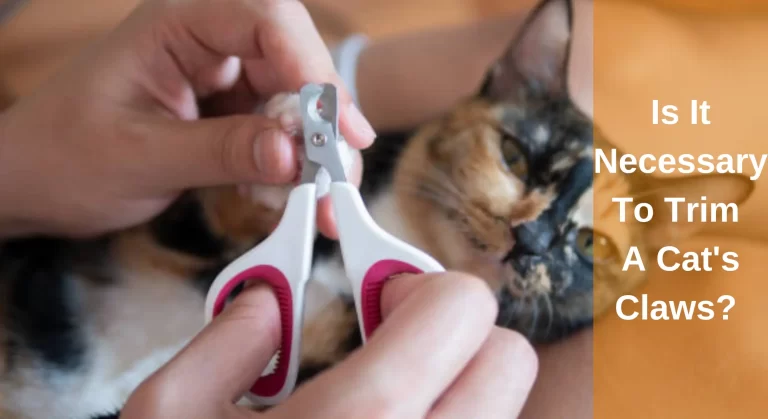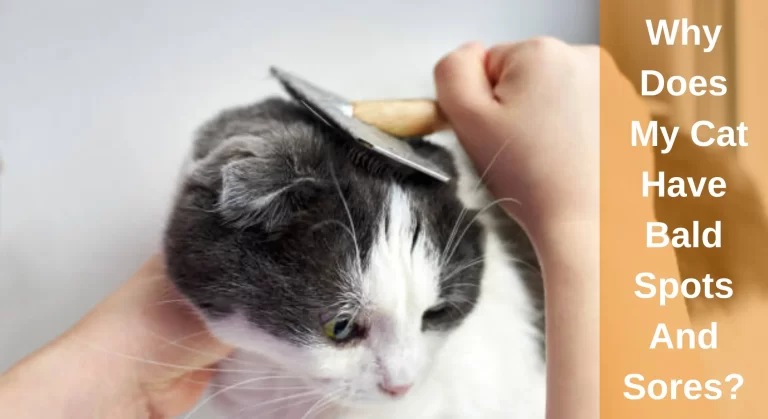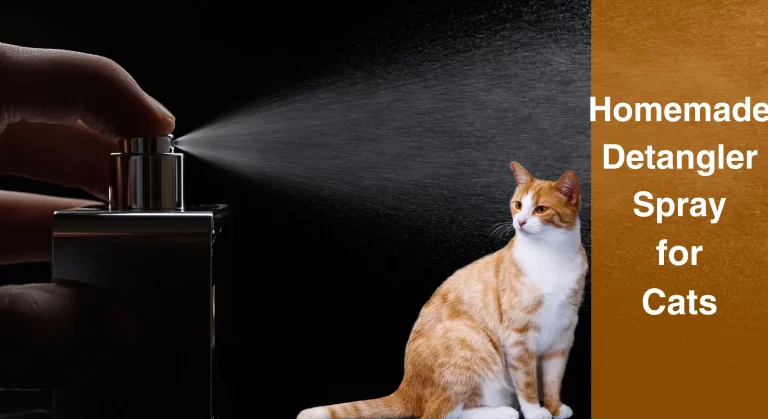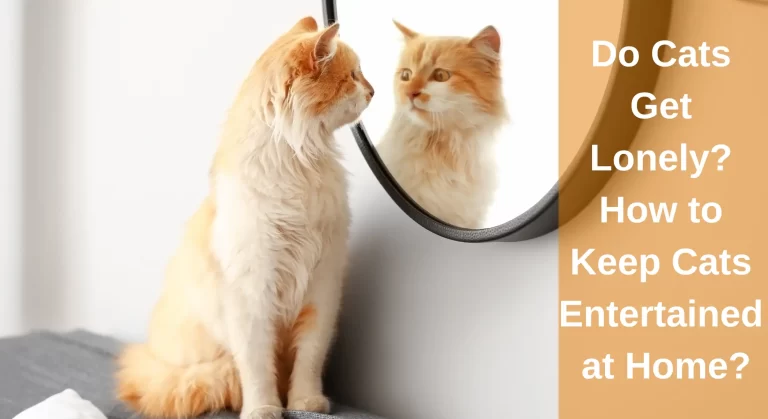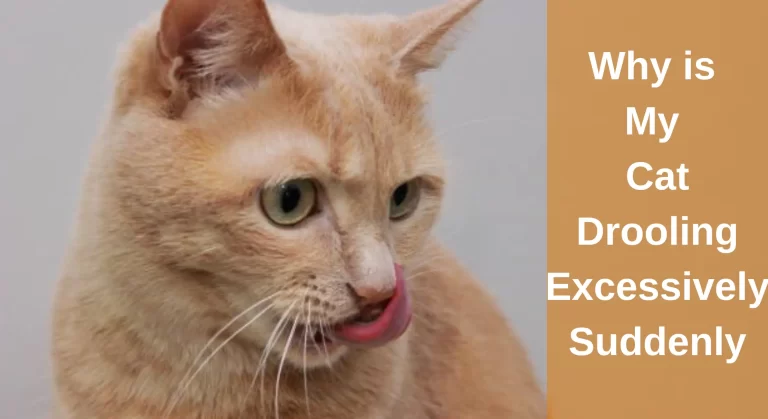Why Is My Cat Shedding So Much? Causes and Prevention
Cat owners know how annoying it is to have cat hair everywhere. No amount of vacuuming seems to get rid of all those pesky hairs. Wearing black is a colossal crime, with all those cat hairs clinging onto your coat or leggings. Fortunately, shedding in cats is normal. Felines shed hair in the spring as the warmer weather approaches.
But why is my cat shedding so much? There are certain times of the year when cats shed, and we know some underlying conditions might cause them to shed excessively. Cats suffering from skin irritation can also lose their hair, leaving them bald patches.
They shed more during stressful times when cats are nervous or scared. The more cats age, the less often they groom themselves. As a result, their fur can either become matted or shed more than usual. Excessive shedding can also be due to medical reasons or a poor diet.
This article is all about why my cat is shedding so much, how much shedding is normal, and what to do if your cat’s shedding is unusual. And I’ll share some tips on reducing the amount of shedding.
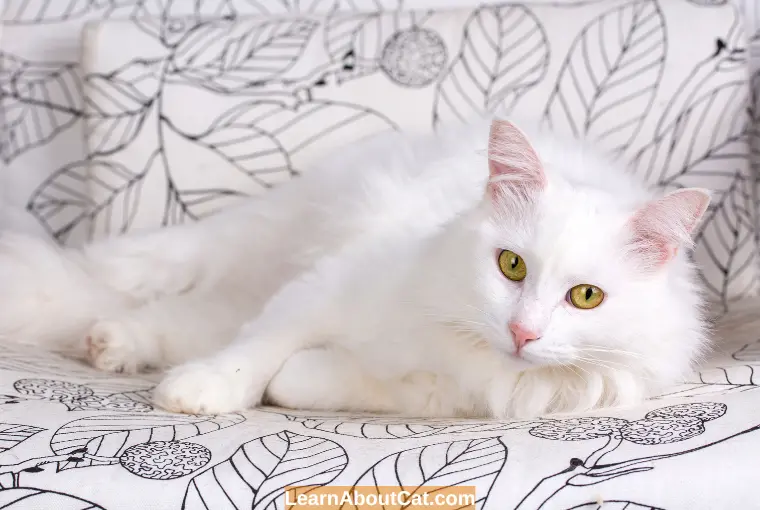
Why Do Cats Shed?
Shedding is a normal process in cats where they lose their dead hair to allow new growth and the release of oils. Some breeds with longer hair, e.g., Persian, and Maine Coons, shed more than shorter hair breeds.
It happens during spring and autumn, in spring to lose the excess hair that kept them warm, and in autumn to prepare for the winters.
However, because cats are domesticated and stay in air-conditioned environments, their shedding cycle is usually thrown off, and they shed roughly all year round.
Even though cats are independent groomers, they will need to be brushed. Not only does brushing reduce the amount of shedding, but it also prevents hairballs which can obstruct your pet’s alimentary canal and cause a hazard.
Why Is My Cat Shedding More Than Usual? Normal Reasons
Most of the time, shedding in cats is completely normal; however, if you notice redness, irritation, or exposed parts of your cat’s skin, you should make an appointment to see the vet. Your vet will conduct a few examinations, notice the pattern of exposed patches and send blood work to figure out the cause of shedding.
These are some probable conditions that could have an impact on your cat’s shedding:
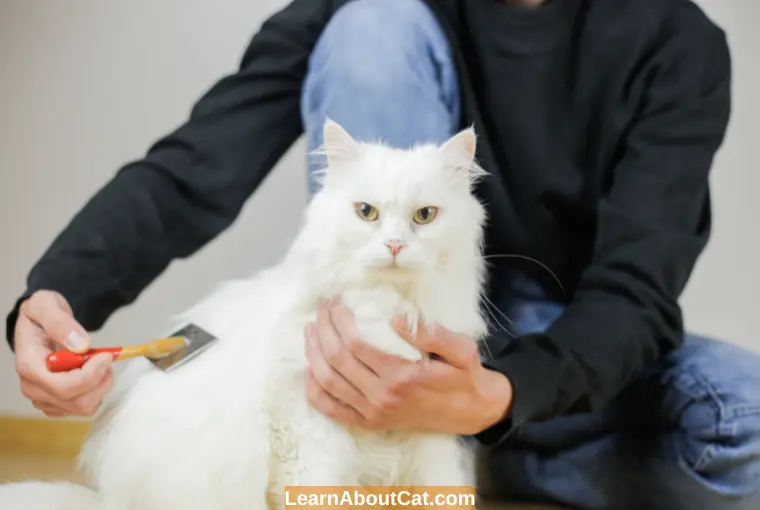
1. Dehydration
If your cat is not drinking enough water, its skin will get dry and flaky, and shedding is inevitable. Cats should drink 4oz of water for 5 pounds of body weight. Any less than that, and they exhibit the following symptoms:
- Lethargy
- Panting / Increased Respiratory Rate
- Increased Heart Rate
- Loss of appetite
- Dry gums
2. Poor Nutrition
Cats obtain all the nutrients they require to be healthy inside and out from their food. This also applies to the condition of their lovely fur coats. Because hair is made of protein, your cat requires high-quality protein in its diet to maintain its coat health.
Many commercial kibbles contain low-quality protein and carbohydrate fillers which do not meet your furry friend’s nutritional requirements. When hair follicles weaken, they easily slip out of your cat’s skin, leading to excessive shedding.
If you have recently changed your pet’s food and the shedding has increased, that might be why. You can either revert back to its old food or talk to a veterinarian about this.
3. Stress
Anxiety can cause your cat to groom itself way too much as a source of comfort. This excessive grooming damages the hair follicles, causing them to fall out more.
Some other signs of stress in felines are a change in appetite, hiding, sleep disturbances, lethargy, hesitation to use their litter box and running around frantically. If this is happening, try figuring out what is triggering your pet.
Cats find comfort in familiarity, so if you have changed their food or bed, have recently moved, or there has been a new addition to the family, it can cause them a lot of anxiety. You should remove what’s stressing your furry friend or talk to a veterinarian about this.
4. Age
The cat may also find it difficult to groom itself as they age, if they have arthritis, or if they are in pain. Because a cat can no longer groom itself, they appear to shed more as they lose its ability to do so.
5. Pregnancy – lactation
The nutrients in pregnant and lactating felines go towards supporting their young, along with the hormonal changes the new mom is going through, so it’s no wonder shedding increases during this time.
Don’t worry; the hair fall will decrease once all kittens have weaned off of their mom. On average, female cats shed more than male cats due to their hormonal changes.
6. Season Change
Your cat naturally adjusts its coat thickness according to the weather for a better thermoregulation. As the days get hotter, your pet will shed more to prevent overheating. When it’s autumn again, your cat will shed less.
You will notice this pattern if your house has no heating system or air conditioners or if you have an outdoor cat. Indoor cats shed throughout the year at a constant rate.
Medical Causes of Excessive Cat Shedding
Make an appointment with your veterinarian if you notice that your cat’s skin has bare patches, irritation, or redness. A skin biopsy will be performed to assess whether there are infections or parasites on the skin. As well as skin scrapings, hair examinations, blood tests, and urine tests, they may need to perform certain laboratory tests.
Shedding in cats can be affected by a variety of health conditions, such as:
1. Parasites
You may not be able to see them, but parasites like fleas, lice, and mites can cause your cat’s skin to develop problems.
Fleas bite into your pet’s skin, causing irritation, scratching, and itching, which leads to the weakening of follicles and, ultimately, hair loss.
Your cat may develop infected wounds and bald spots if it scratches or bites at its skin incessantly. To eliminate the parasites for good, you must treat both your cat and your home if you suspect that your cat may be infected with one of these parasites.
The veterinarian can guide you on the effective fleas treatment for your cat and provide you with preventative tips.
2. Allergies
If your cat is allergic to something, it can cause skin problems and hair loss if your cat sheds often. Cats can be allergic to many things, from food, and the environment, to litter and dust, to certain products, any of which can result in loss of hair and skin issues.
In cats with allergies, you may notice that their skin becomes itchy, they shed a lot, and they develop bald spots as a result of losing so much hair. In order to help your cat feel more comfortable, it is important that you consult with your veterinarian to identify the cause of the allergy.
3. Metabolic diseases
Certain diseases like thyroid issues, adrenal gland problems, and cancers can switch your cat’s body into a catabolic state, where there is more breakdown than growth and regeneration.
In an attempt to ration nutrients and energy, your cat’s body will excessively start shedding its hair.
Additionally, cats with fleas, skin issues, and allergies will shed due to the constant damage to their skin.
4. Fungal Infections – Ringworm
Bacterial or fungal infections can cause shedding. Ringworm is an infection caused by a fungus that can affect cats, dogs, and even humans.
The disease is typically spread from infected animals through direct contact or through items that infected animals have contacted.
The skin of an infected cat may appear round, thickened, or scaly, with large amounts of hair loss.
Various topical ointments and creams can be used to treat ringworm, as well as shaving, medicated shampoos, and oral antifungal medications. It is important to consult your veterinarian if you think your pet has this type of fungal infection, as they may know how to treat it.
How Much Shedding is Normal? How Can You Tell When Your Cat is Shedding Too Much?
It is a fact that all cats shed – and each cat sheds differently – indoor cats tend to shed all year long, but outdoor cats usually shed more intensely during the summer months when they spend more time outside. There are generally two cycles of heavier shedding a year, usually in the spring and fall.

As far as defining a “normal” amount of shedding goes, a cat’s breed can also play a role. Long-haired breeds such as Persian, Maine Coon, or Ragdoll cats shed way more than shorter hair breeds, like the siamese cat. Cat breeds such as the Cornish Rex and Phrenx are often regarded as hypoallergenic. And some short-haired cat breeds, such as the Scottish Fold and American Shorthair, shed somewhere in the middle of the two previous categories(Spring and Fall).
Felines also shed more in the spring and autumn when the weather changes.
Nothing to worry about unless you notice bald patches or symmetric hair loss. In that case, you should consult a vet, as excessive hair loss could be due to an underlying disease.
Interesting Reading: What Causes Matted Cat Fur?
How to Get Rid of Cat Hair in the Home?
Regularly vacuum your house and use a lint roller on surfaces and clothes. You can rub dryer sheets on surfaces as well.
Alternatively, you can purchase or make an anti-static spray. Mix two tablespoons of fabric softener in one cup of water and spray it to neutralize charges that make those pesky pet hairs cling to fabrics.
How Do I Stop My Cat From Shedding? Tips: How To Keep Cat From Shedding
So how do you clean up the cat hair that has conquered your entire house? These suggestions will help you reduce the amount of cat hair everywhere:
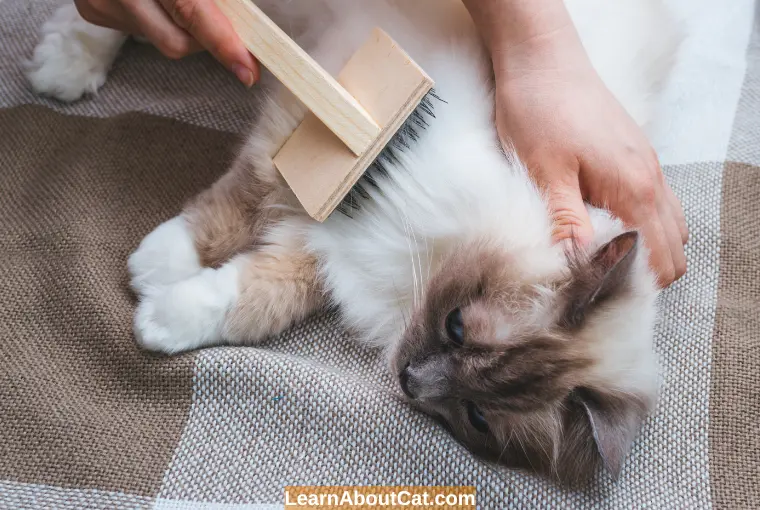
1. Talk to the Vet
The most important thing to do is to consult with a veterinary behaviourist if your cat has excessive grooming due to stress levels. You should also ensure that there are no medical conditions that need to be addressed in order to prevent excessive grooming.
2. High-Quality Food
Make sure your cat is getting all the nutrients it needs by feeding a good quality cat food that is nutritionally complete and balanced. Omega-3 and omega-6 fatty acids in cat foods may support skin and coat health in certain situations(Shedding).
3. Keep Your Cat Hydrated
Water should also be consumed in sufficient amounts; the presence of a water fountain encourages them to drink more water. Healthy cat coats, as well as overall health, can be enhanced by keeping them well-hydrated.
Check Out: How to Get Your Cat to Drink More Water
4. Reduce Stress
Reduce your cat’s stress level by providing a stress-free environment. You should provide them with a place where they can retreat and feel secure. Provide them with food puzzles and enrichment activities to keep their minds busy.
Make sure to minimize your stress levels. This is especially important during times of transition, like moving to a new place.
5. Brush your Furry Friend
Brushing your pet regularly strengthens your bond with your pet and can help reduce shedding by catching the loose hairs in the brush. Including treats in the process can help keep your cat happy and tolerant. Use a vet-recommended brush to get the best results.
6. Give Your Cat a bath
Even though cats are self-groomers, running water and shampoo through your pet’s coat can loosen up the dead and dangly hair, drastically reducing shedding everywhere.
If bathing your cat is not a feat you can handle yourself, you can take your furry friend to a professional groomer. They are trained in cat bathing, brushing, and cutting their nails, giving you a polished, less mess-creating cat.
7. Take Your Cat Through the Groomer
Some veterinary offices and groomers offer trimming services for cats with fur that needs some extra care. It can be particularly helpful for older cats who are unable to groom themselves, as well as for long-haired cats.
8. Purchase a Lint Roller
If you have a shedder, a lint roller is your best friend. It’s a fast and easy way to get rid of loose strands stuck to your clothes or your couch, and it’s portable too. Dryer sheets work too.
9. Anti-Static Spray
You can purchase this commercially or make it at home. Just add two tablespoons of fabric softener in one cup of water, and add this mixture to a spray bottle.
Because cat hair sticks because of electric charges, the anti-static spray will, by neutralizing the charges, magically remove them.
10. Vacuum Your Home Every day
Make a regular schedule of cleaning up so that the hair buildup doesn’t spin out of control.
Also, Check Out: Causes of Cat Dandruff And Prevention
When Should You Call the Vet?
It’s a good idea to consult your vet whenever you see anything unusual with your cat, whether that’s an alteration in grooming behaviour or increased shedding. Due to cats’ subtle nature and tendency to hide symptoms of illness, a small change in their behaviour might indicate something needs to be addressed.
It is definitely necessary to seek vet care if you observe obvious symptoms such as bald patches, excessive mats, red or irritated skin, signs of illness, or changes in bathroom habits.
You can talk to your vet team about how you can manage your cat’s shedding once they’ve established that your cat’s skin and coat are healthy and their shedding is normal.
Frequently Asked Questions
Is it normal for indoor cats to shed a lot?
Cats shed naturally, so you shouldn’t worry as long as their coat and skin look and feel healthy. However, having bald spots on your cat, biting themselves, coughing up hairballs more than usual, or extreme self-grooming may indicate a need for professional attention.
Cat Shedding a Lot in Winter?
When the weather gets colder and days get shorter, cats shed their thin summer coat to make room for thicker, cosier coats to help them keep warm during the winters.
Why is my cat shedding so much in the summer?
Cats shed more in the warmer months as a thermoregulatory response. They get rid of their thick coats to prepare for higher temperatures and to avoid overheating.
Why is my cat shedding so much after a bath?
You should only give your cat a bath once every four to six months. Any more than that strips their skin of its natural oils and causes it to get flaky and dry.
This dryness loosens up the skin around the follicles and causes increased shedding.
What month do cats shed the most?
Cats shed the most in the summer months in order to stay cool in the heat.
Wrap Up!
Although shedding is one of the few annoying aspects of having a cat, it is absolutely normal. Long-haired breeds shed more than shorter-haired breeds. If your cat is suddenly shedding excessive hair or is developing bald spots, you should visit your vet.
Related Posts:
Who is Isabella?
My name is Isabella, and I am a dedicated and knowledgeable cat enthusiast. With years of experience caring for cats and a deep love for felines, I made a mission to help other cat lovers navigate the challenges of cat ownership.

